Passover (Pesach in Hebrew) is one of the most important 
festivals in the Jewish year. It is the occassion when Jewish people remember how they were led away from slavery and out of Egypt towards the Promised Land. Also, the Passover is one of the three national feasts of Israel that were commanded by God that Israel as a nation commemorate annually, and they are; Passover, Shavuot (the feast of weeks also know in the Christian world as Pentecost) and Succot (the feast of tabernacles). A special service called Seder (Order) takes place over a meal around a table in a home.
Read more.. »
Today I’d really like you to spend a few minutes to think about your use – 
or most probably wastage – of water. Annually, the United Nations designates this day as World Water Day as an opportunity for the world to think about the Environment and our impact upon the natural world. Interestingly for me, last year’s theme was water and culture which drew attention to the fact that “there are as many ways of viewing, using, and celebrating water as there are cultural traditions around the world.” This year’s theme is “Clean Water for a Healthy World” – the overall goal is to raise the profile of water quality at the political level so that water quality considerations are made alongside those of water quantity. It is still a reality that an estimated 1.1 billion people rely on unsafe drinking-water sources.
So, today, instead of drinking your tea or coffee, raise a glass of water and celebrate how lucky we are to be able to drink good, clean and healthy water.
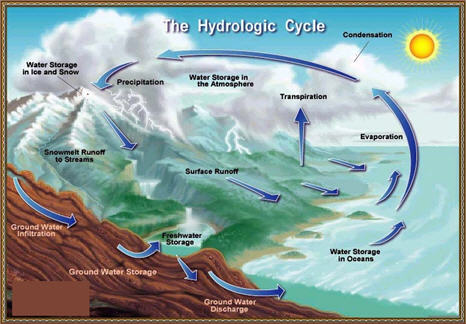
Naw-Rúz (New Day) is the traditional celebration 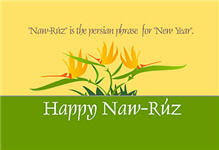
of the Iranian New Year and is celebrated throughout many countries of the Middle East and Central Asia: Iran, Azerbaijan, Afghanistan and Tajikistan. For countries outside of the Middle East, the date has been fixed as 21st March, but traditionally it falls at the spring equinox. Originally it is one of the nine holy days of the Bahá’í Faith and is a work holiday.
Read more.. »
International Women’s Day is a global day to celebrate the economic, political and social achievements of women past, present and future. The first IWD was launched by a woman named Clara Zetkin (German) in 1911. In some places like China, Russia, Vietnam and Bulgaria, IWD is a national holiday. However, the plight of women and the hardship they still face in many countries is highlighted by many organisations – see below.
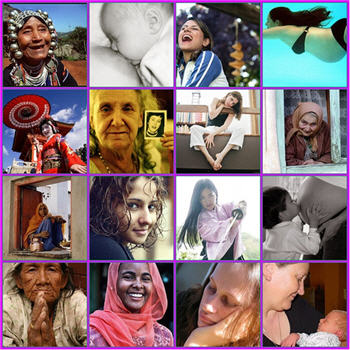
Global issues facing women include:
Females in developing countries on average carry 20 litres of water per day over 6 km
Globally, women account for the majority of people aged over 60 and over 80
Pregnant women in Africa are 180 times more likely to die than in Western Europe
530,000 women die in pregnancy or childbirth each year
Of 1.2 billion people living in poverty worldwide, 70% are women
80% of the world’s 27 million refugees are women
Women own around only 1% of the world’s land
AIDS sees women’s average life expectancy reduced to 43 in Uganda and Zambia
Women are 2/3 of the 1 billion+ illiterate adults who have no access to basic education
Read Fakhria Ibrahimi’s account of the plight of women in Afghanisaton
Official International Women’s Day site – see how you can help bring about change in the world.
Photograph by web/graphic designer Melanie Cook, used with permission. Thank you!
The coming of Spring is celebrated in the Hindu religion over 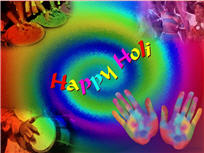
several days during the Festival of Colours – called Holi. Holi is a time for fun rather than religious observance. It is the most vibrant Indian festival, when distinctions of caste, class, age or gender are set to one side. The practical jokes and games that surround Holi are thought to arise from the belief that the origin of the festival lies with Krishna who was very mischievous as a young boy and threw coloured water over the gopis (milkmaids) with whom he is believed to have grown up.
Read more.. »
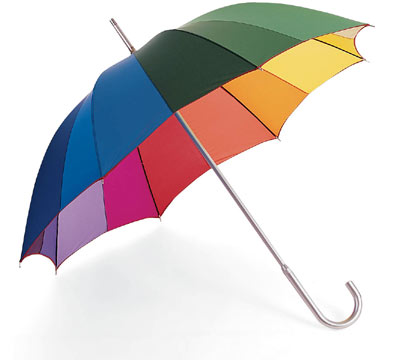
Cross-cultural differences in colour meanings are sometimes the least of our worries when communicating internationally. I have just finished off an article which is to appear in the next edition of Winning EDGE magazine for the Insitute of Sales and Marketing. In it, I caution marketers to know their target audience as different cultures ascribe various meanings to colours. How easy is it to convey the wrong meaning by getting colour choice wrong?
White in the west symbolises brides, angels, good guys versus funerals and death in the East; black in the West symbolises death, funerals and bad guys versus a colour for young boys in China and restoring balance in Chakra energy (Indian medicine). Then I went on a hunt to find out more. This is what I found out…
Read more.. »
Chinese New Year is rich in traditions, rituals and folklores. 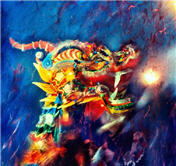
The celebrations take place over 15 days. It has been said that it is a combination of the US Thanksgiving, and Western Christmas and New Year. This is hardly an exaggeration! The origin of the Chinese New Year itself is centuries old – in fact, they say too old to actually be traced. All agree, however, that the word Nian, which in modern Chinese means “year”, was originally the name of a monster that preyed on people the night before the beginning of a new year. Previously, the Chinese lived in a totally agrarian society and only took a ‘holiday’ once a year after the harvest and before planting new crops. this coincided with the lunar New Year. The Chinese New Year is now popularly known as the Spring Festival because it starts from the Beginning of Spring.
Read more.. »
I was recently sent an email with some amusing photos
comparing overcrowded trains in India and Pakistan (as pictured on the right) with slick, modern trains in other parts of the world. I began to wonder just how stereotypical were these pictures and whether any of them depicted a true-to-life view of train travel around the world. My investigation led to some interesting blogs and some stunning pictures.
Read more.. »
This is a Mahayana Buddhist festival which in India is known as 
Parinirvana. (Celebrated by some Buddhists on 15th Febraury). This festival marks the death of Buddha and celebrates when, at the age of 80, he finally attained nirvana (enlightenment) and was released from the cycle of death and rebirth: freedom from physical existence and its sufferings. Mahayana or Theravada Buddhists meditate or visit temples or monasteries, and the day is treated as a social occasion. Nirvana Day celebrations vary throughout the world but usually include food preparation and the exchange of gifts such as money, household goods, or clothing.
Read more.. »
Denying children’s rights is WRONG! Put it right. 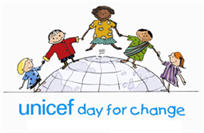
This is UNICEF’s annual event to bring to the world’s attention the plight of disadvantaged children around the world and to promote a change in their circumstances. Primarily, it is a day for school-age children and schools are invited to particpate by having a non-uniform day – but I believe it is just as important for ALL of us to take note and contribute in someway to make a difference. What can you do today to make the world a better place?
Follow the links here to get a fuller understanding about what is going on in the world:
UNICEF
Minority Rights Group International
UNHCR












 Hello, I'm Deborah Swallow and, for the last fifteen years, I've worked in over thirty countries addressing the complexities of people working internationally across multiple cultures, so individuals and organisations alike can gain an authentic competitive edge and win in international markets.
Hello, I'm Deborah Swallow and, for the last fifteen years, I've worked in over thirty countries addressing the complexities of people working internationally across multiple cultures, so individuals and organisations alike can gain an authentic competitive edge and win in international markets. 